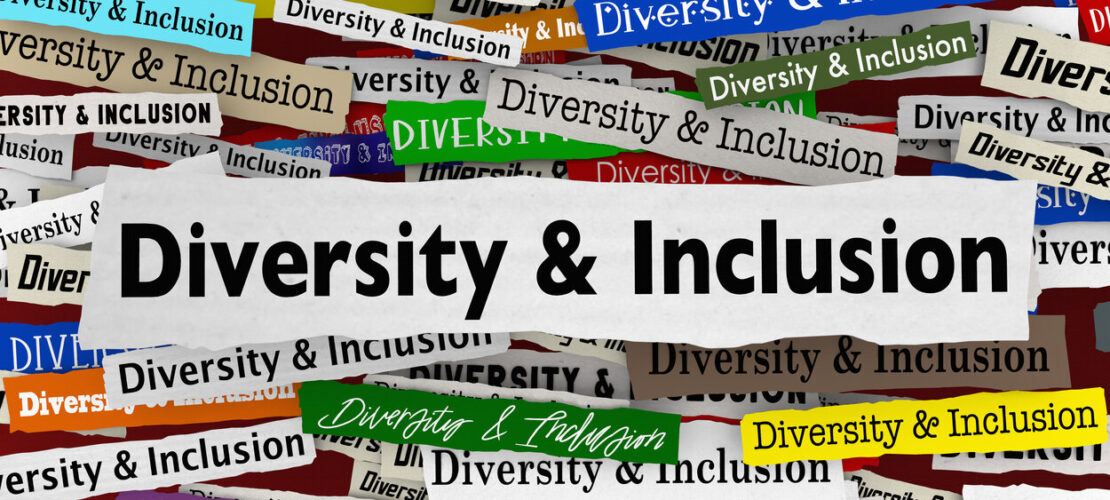
We all know that compliance training is important. Why? It ensures employee safety, customer satisfaction, and uniformity across business practices. But do we all view diversity & inclusion training in the same light?
Despite being a sub-set of compliance training, diversity & inclusion training is not always tackled with the same rigor as other compliance categories.
But just like data security, HIPPA privacy, cybersecurity, and sexual harassment training, diversity & inclusion can play a crucial role in your organization’s performance.
Diversity & inclusion compliance, when thoughtfully folded into company culture, can have transformative effects on your business.
In this article, we’re going to answer the following questions:
- What is the difference between diversity and inclusion?
- Why is it important to know the difference between diversity and inclusion?
- What are the benefits of diversity & inclusion compliance training?
- What are must-have diversity & inclusion approaches in 2020?
What is the difference between diversity and inclusion?

Diversity and inclusion are not interchangeable phrases. They are two distinct terms that embody different ideas. And a successful initiative for improving diversity & inclusion must have a solid understanding about what these terms mean.
Diversity can be thought of as the variation of individual characteristics in your workplace population. This includes both clients and staff.
Diversity can occur across a variety of dimensions: ethnicity, sexual orientation, physical ability, race, age, gender, culture, nationality, life experiences, educational backgrounds, neurotypes, socioeconomic backgrounds, etc. A diverse workplace, then, would have clients and staff (at all levels) who vary on these levels.
Inclusion, on the other hand, is a measure of how well individuals of diverse backgrounds are treated and accommodated at your workplace.
Inclusivity is represented by hiring practices, compensation, physical accommodations, employee-supervisor relations, and business features. An inclusive workplace, then, would respect and accommodate a variety of individuals through thoughtful business practices.
Why is it important to know the difference between diversity and inclusion?
It’s important to understand the difference between diversity and inclusion because a modern workplace must have both. If diversity is who you hire, and inclusion is how you treat them, then diversity without inclusion is a recipe for disaster.
Let’s consider a scenario. Suppose an organization sets a diversity target to hire at least 10 workers from minority backgrounds. Suppose that organization meets their target. But, aside from hiring a more diverse cohort, they don’t do anything else to make sure the workplace is able to provide a safe and fair environment to their newly-diversified staff.
Out of those 10 minority workers, 5 are paid less than their non-minority counterparts. Three of them file complaints with HR over insensitive remarks made by colleagues. And none of them are hired to fill leadership vacancies, despite being qualified for those positions.
Moral of the story: while fostering diversity is great, diversity initiatives must be accompanied by inclusivity policies in order to make a positive impact on your business.
What are the benefits of diversity & inclusion compliance training?

Diversity & inclusion compliance training can be pivotal to business performance across several measures. From talent to bottom-line performance, diversity & inclusion compliance training has the potential to radically improve your business.
Here are some evidence-based facts about the organizational effects of workplace diversity & inclusion:
- Workplaces that foster a strong culture of diversity and inclusion report higher employee job satisfaction.
- Employees who perceive their workplaces as diverse and inclusive have greater trust for their employers.
- Increasing employees’ feelings of inclusivity can reduce absenteeism.
- Companies with more inclusive policies have more innovative teams.
- Companies with diverse leadership report higher revenues.
- Businesses with more women in C-level positions are more profitable.
The common thread across these findings? You have to actively foster a climate of diversity & inclusion in order to see a measurable impact in your organization.
When a business effectively incorporates diversity & inclusion into their policies and culture, that’s when the magic happens. In terms of talent, innovation, and even financial measures, businesses who make D&I a priority tend to perform better.
Of course, adding or reinforcing a pillar in your company culture is no easy feat. It requires several things:
- Strategic diversity & inclusion compliance training for all levels of employees
- An organizational change approach
- A deep-dive into company policies and culture
What are must-have diversity & inclusion compliance training approaches in 2020?
In 2020, companies are under greater pressure than ever to provide diverse and inclusive environments – not just for employees, but also for customers.
With standards at an all-time high, it’s important to take a holistic approach to diversity & inclusion compliance. This approach should occur at the individual level through D&I compliance training, and at the organization-level through culture and policy change.
Individual D&I compliance training lays the groundwork for improving the diversity climate at your workplace, and organization-level efforts will reinforce and cement the positive effects of D&I training.
Here are some best-practices for improving workplace diversity & inclusion compliance in 2020:
Stretch out your D&I training sessions: Longer diversity & inclusion compliance training programs are more effective.
Expand D&I efforts across organization: Enacting other diversity-related initiatives in your organization can increase the efficacy of diversity & inclusion compliance training.
Designate a D&I role: Creating a diversity & inclusion management role can facilitate and measure long-term organizational change.
Review company policies and literature: This is one of the most important ways that businesses can walk-the-walk when it comes to D&I compliance. Going through your policies and literature will help you identify areas where biases may be present. It can also reveal opportunities to enact policies that will promote diversity.
Involve your communications department: A big focus of D&I compliance training is how we communicate with one another. Your communications department can play a big role in promoting diversity & inclusion.
Develop leaders who can effectively promote D&I: Implement leadership-specific D&I training to promote equitable leadership practices across the board. Want to know more about leadership training? Check out our article, How to Develop High Potential Employees Into Great Leaders!
Look at the composition of your departments: Are some departments less diverse than others? Increasing diversity within teams can reduce workplace bias by increasing opportunities for interaction with different groups.
Hint: A good place to start is your leadership departments. Leadership departments tend to lag behind others in terms of diversity.
Measure impacts of D&I compliance training: Everything is measurable! You can measure changes in diversity and inclusion within your business. You can also measure the impacts of diversity & inclusion compliance training in your business. Interested in learning more about how to measure the impact of company initiatives? Check out this article!
Assess your company values: One of the best ways to convey your company’s culture is through its values. Do your company values reflect a commitment to diversity & inclusion? If not, this is a great place to start working on your D&I initiatives.
CONCLUSION
Diversity & inclusion compliance training can be pivotal to your organization’s performance. It can increase your talent pool, boost innovation, improve employee morale, and enhance your bottom line.
Companies that reap the benefits of diversity and inclusion go above and beyond compliance training. They reinforce the message of their compliance training by enacting inclusive policies and initiatives across all levels of the organization.
Combining diversity & inclusion compliance training with organization-level initiatives can transform company culture. More than that, it will cultivate a workplace environment where professionals of all backgrounds can thrive.
At RTG Solutions Group, we are firm believers that building diverse and inclusive workplaces fuel organizational success. Interested in a new diversity & inclusion compliance training approach? Contact us today to start planning your diversity & inclusion strategy!
